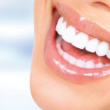One of the main goals of dentistry is to leave the mouth in its natural state, but in some cases tooth extraction may be necessary. In particular, teeth that cannot be treated should be extracted in order not to threaten oral health.
Although tooth extraction is a fearful procedure in general, it does not cause any painful conditions since it is performed by specialist dentists and oral surgeons under local anesthesia. If necessary, various bridge or filling applications can be applied to the empty area after tooth extraction.
In Which Situations Is Tooth Extraction Performed?
Tooth extraction is the separation of a tooth from its socket in the mouth, and in some cases it is a procedure that must be performed to maintain overall oral health. Usually, cavities and oral infections that are not intervened in time can progress and make the tooth unsalvageable. In such cases, it may be necessary to extract the tooth to prevent the infection from spreading to other healthy teeth.
Extensive dental trauma and deep decay are the main reasons for tooth extraction. If it is not possible to save severely damaged teeth by any other method, the tooth must be extracted. In addition, wisdom teeth that have failed to erupt into the gums and affect oral comfort should also be extracted in some cases.
Other conditions that require tooth extraction are as follows:
- As a result of tooth decay and fracture, applications such as root canal treatment, filling and crown can be made. However, in cases where these methods are not sufficient, tooth extraction is preferred.
- When gum disease reaches a level that damages the surrounding tissues, it may result in tooth extraction.
- If space is needed in the mouth due to orthodontic treatment, the tooth can be extracted.
- Some medicines used to treat diseases such as chemotherapy and organ transplants can threaten the immune system. In such cases, some teeth may need to be extracted to prevent dental infections.
How is tooth extraction performed?
Local anesthesia is given to the area before tooth extraction and intraoral sensitivity is prevented. The amount of anesthesia applied may be higher in interventions that require deeper procedures such as wisdom teeth. The gum and bone tissue is then cut. Using appropriate instruments, the tooth is moved back and forth and separated from the jawbone and ligaments holding it in place. In some cases, the tooth is extracted in one piece, while in others it may be extracted in parts. After the extraction, bleeding and clotting occurs in the area, the area is tamponed with a gauze pad and dissolvable sutures are applied to the gum edges.
After Tooth Extraction
After tooth extraction, medicines can be used to prevent infection and pain in the area.
Usually, an antibiotic medication is applied to the extraction site, and the patient is also advised to take oral medication.
Over a period of a few days, oral healing is complete and during this time there are a few things to consider to reduce sensitivity:
- First of all, the medicines recommended by the dentist should be used regularly.
- The mouth should be thoroughly tamponed after the procedure to reduce bleeding in the area and to accelerate clot formation. The gauze placed in the area should be changed at regular intervals.
- Extra care should be taken with the food consumed in the first 24 hours after extraction. Soup, puree, pudding-style soft foods should be consumed. Wait 1-2 days after recovery to switch to solid foods.
- Smoking should be stopped to speed up recovery.
- During sleep, the head should be supported with a pillow and kept in an elevated position.
- The inside of the mouth should not be rinsed hard, and severe force should not be applied to the area. Hard brushing of the teeth should be avoided.
Full recovery after extraction is usually completed within 1-2 weeks. During this period, intraoral sensitivity and pain will also subside over time. However, in cases of prolonged and persistent pain or bleeding, a dentist should be consulted without delay.




